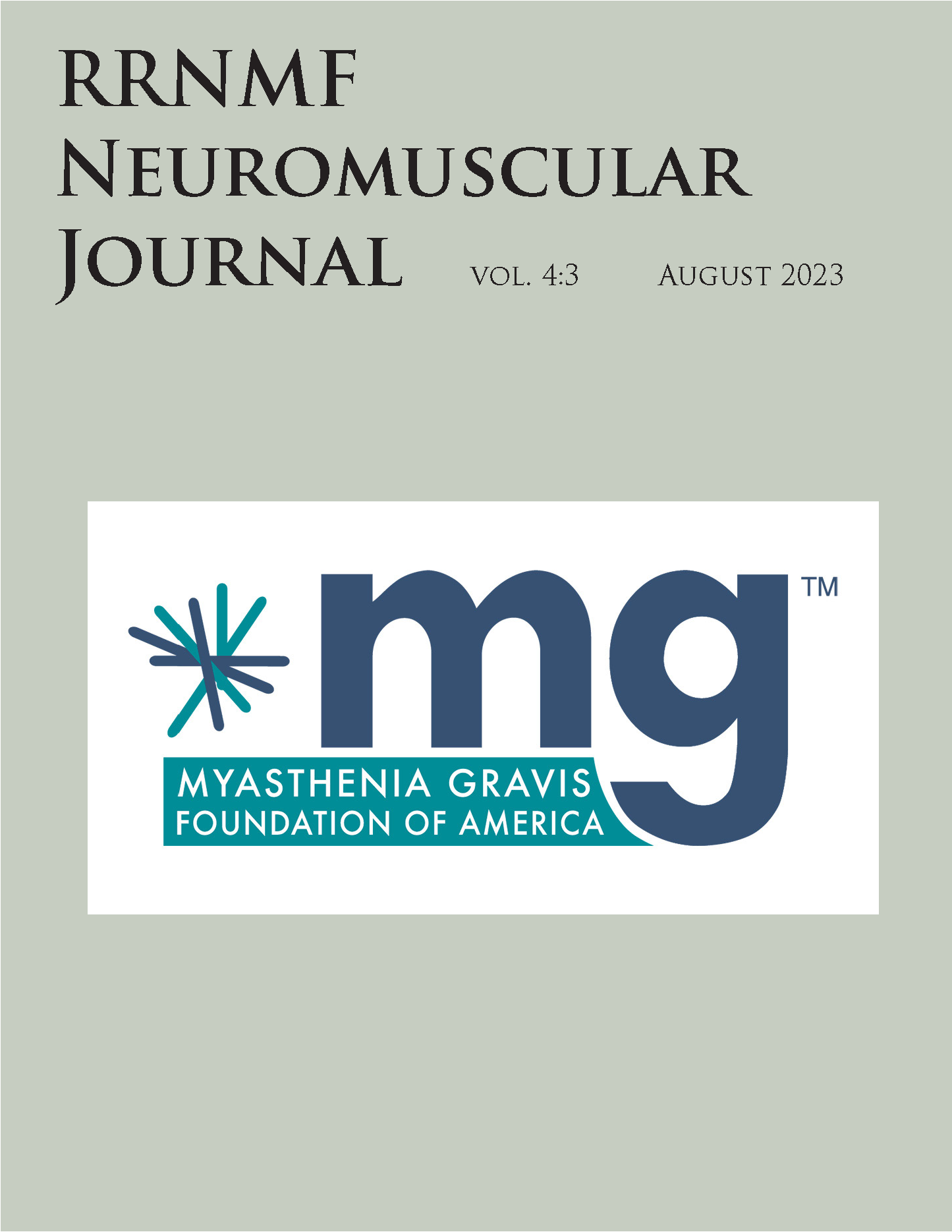Pharmacological treatment of Lambert-Eaton Myasthenic Syndrome
DOI:
https://doi.org/10.17161/rrnmf.v4i3.19550Keywords:
LEMS, AmifampridineAbstract
Lambert-Eaton myasthenic syndrome (LEMS) is a very rare antibody-mediated autoimmune disease of the neuromuscular junction. Therapy can be divided in symptomatic treatment and immunosuppressive treatment. Symptomatic treatment with amifampridine is the only therapy currently authorized for use in LEMS patients. In the Netherlands the first choice drug is amifampridine base in an extended release formulation instead of the currently authorized amifampridine phosphate. This formulation has lower costs and is possibly safer due to lower peak concentrations. Other therapy used in LEMS patients is prescribed off-label and is based on experience in patients with myasthenia gravis. In many cases pyridostigmine is added as symptomatic treatment. In almost half of patients immunosuppressive therapy is started, mostly corticosteroids with or without azathioprine. Intravenous immunoglobulins and plasma exchange are used as emergency treatment.
Currently no randomized clinical trials with new therapies are ongoing or announced in patients with LEMS, although multiple new therapies for myasthenia gravis are being investigated. These future therapies can be differentiated in symptomatic and immunomodulating drugs. The immunomodulating drugs can be further differentiated in early stage drugs which target the B-cell, later stage drugs which target the circulating antibodies and targeted therapy which have a disease-specific target. Some early and later stage immunomodulating drugs show promising results in myasthenia gravis although high cost and uncertain long term safety may be limiting for incorporating these drugs in LEMS treatment guidelines.
Clinical trials in LEMS patients are lacking due to the rarity of the disease and we suggest the following requirements for future trials of potential new treatments: Sufficient power by performing multicenter or n-of-1 trials when appropriate, a cross-over design to reduce the number of patients and using a LEMS-specific quantitative primary outcome measure like the 3TUG score.
Downloads
Downloads
Published
Issue
Section
License
Copyright (c) 2023 Wisse Roelof Bakker, Linda Remijn-Nelissen, Kirsten Schimmel, Martijn Tannemaat, Jan Verschuuren, Teun van Gelder

This work is licensed under a Creative Commons Attribution-NonCommercial-NoDerivatives 4.0 International License.

